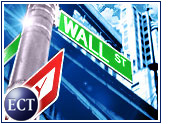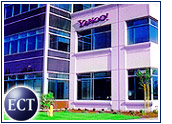When E.phiphany, Inc. (Nasdaq: EPNY) announced that it would pay $3.18 billion (US$) in stock for privately-held Octane Software, Inc., analysts and market watchers were left shaking their heads over the price.
The deal followed another lofty announcement in which i2 Technologies, Inc. (Nasdaq: ITWO) agreed to pay $9.3 billion for Aspect Development, a company with $95 million in revenue last year — up from $86 million in 1998.
At the heart of the matter is whether these valuations are based upon rational investment principles or an anomalous condition within the laws of supply and demand.
Mergers in the Real World
The Octane and Aspect deals contrast starkly with the Tribune Company’s planned purchase of the Times Mirror Co. If that deal is approved, the resulting powerhouse will have annual revenues of about $7 billion and own 11 major daily newspapers, 22 television stations, 4 radio stations, and the Chicago Cubs baseball team.
The stock market, which typically bases investments on revenue and earnings potential, values the combined companies at roughly $9 billion.
The burning question then, is which is more valuable — the expanded Tribune company with brand names that everyone in the U.S. knows, or Aspect Development, which publishes an electronic catalog of products available for sale online?
Potential Rules the Day
“In this new economy, the total market potential factor of a valuation is so explosive that the valuation of these companies like E.piphany and Ariba have been just blowing through the roof,” said Marla Grossman, director of the Internet Ventures Group at Washington law firm Verner, Liipfert, Bernhard, McPherson and Hand. “Given the grand potential for growth for many of these companies, the values are appropriate.”
“It’s all relative,” said Ian Morton, an analyst at Chase H&Q. “It’s hard to say what these agreements ultimately should be priced at.”
Indeed, since the majority of these deals are stock swaps, it is often hard to determine the underlying value of the transactions. “Part of the appeal is that the companies doing the acquiring have very high stock prices,” said Brian Goodstadt, equity analyst at Standard & Poor’s. “Therefore, they don’t have to pay cash.”
Valuations Out of Whack
By some accounts, market analysts are coming up with elaborate justifications for today’s valuations. There are others, however, that cannot believe what they are seeing and attribute the activity to a vast amount of investment dollars chasing a small number of exciting new companies.
i2, for example, is an excellent company whose software is used for supply chain management. The company’s revenues have been zooming — the firm grew from about $17 million in 1994 to $571 million last year.
Additionally, i2 is not a money loser. Net income was $30.1 million or 36 cents per share. Had the Internet and B2B not existed, i2 would be commanding a premium of somewhere in the range of 30 to 50 times earnings.
As a darling of the Internet world, i2 now has a valuation of 463 times earnings. If it grows to $2 billion in size in five years and earns $150 million to deliver investors $2 per share, the company will still have a multiple of 75 per share at its present price.
Looked at another way, when i2 matures as a corporation — so that it is growing at about five percent per year and deserves a valuation like the Tribune Co. — it will have to be a $30 billion company generating about $3 billion in earnings to support its present stock price.
“I do think some valuations have gotten ahead of themselves,” said Goodstadt, who has a “hold” recommendation on i2. Still, he said, the 35 percent premium i2 paid for Aspect is “reasonable” in light of the company’s strong prospects. “If you look at all the estimates for e-commerce, they’re skyrocketing,” he said. “It will be a several trillion-dollar market in a few years. The potential is huge, and the gross is huge.”
Will E-Commerce Firms Make Money?
While the market for buying products via e-commerce will undoubtedly be huge, it is not at all clear how e-commerce firms will benefit. Online purchasing, for example, is not going to create new buying. It is going to streamline what is already being purchased.
Furthermore, competition will drive down fees charged by these so-called B2B e-marketplaces, so that it is far from clear what percentage of the purchasing dollars will end up in the pockets of companies who enable these transactions.
In the last 20 years, services like EDI and facsimile have come into being to handle the trillions of dollars that are now being spent on B2B purchasing. However, how much of those purchasing dollars have flowed to the EDI and fax companies?
Ultimately, the bottom line is that we now have e-commerce companies selling for incredible stock multiples that have gone well beyond the historical bellwethers used to evaluate operating companies. While many analysts claim that the prices are justified, there are others who cannot understand why they fail to see that the emperor is wearing no clothes.












































Social Media
See all Social Media